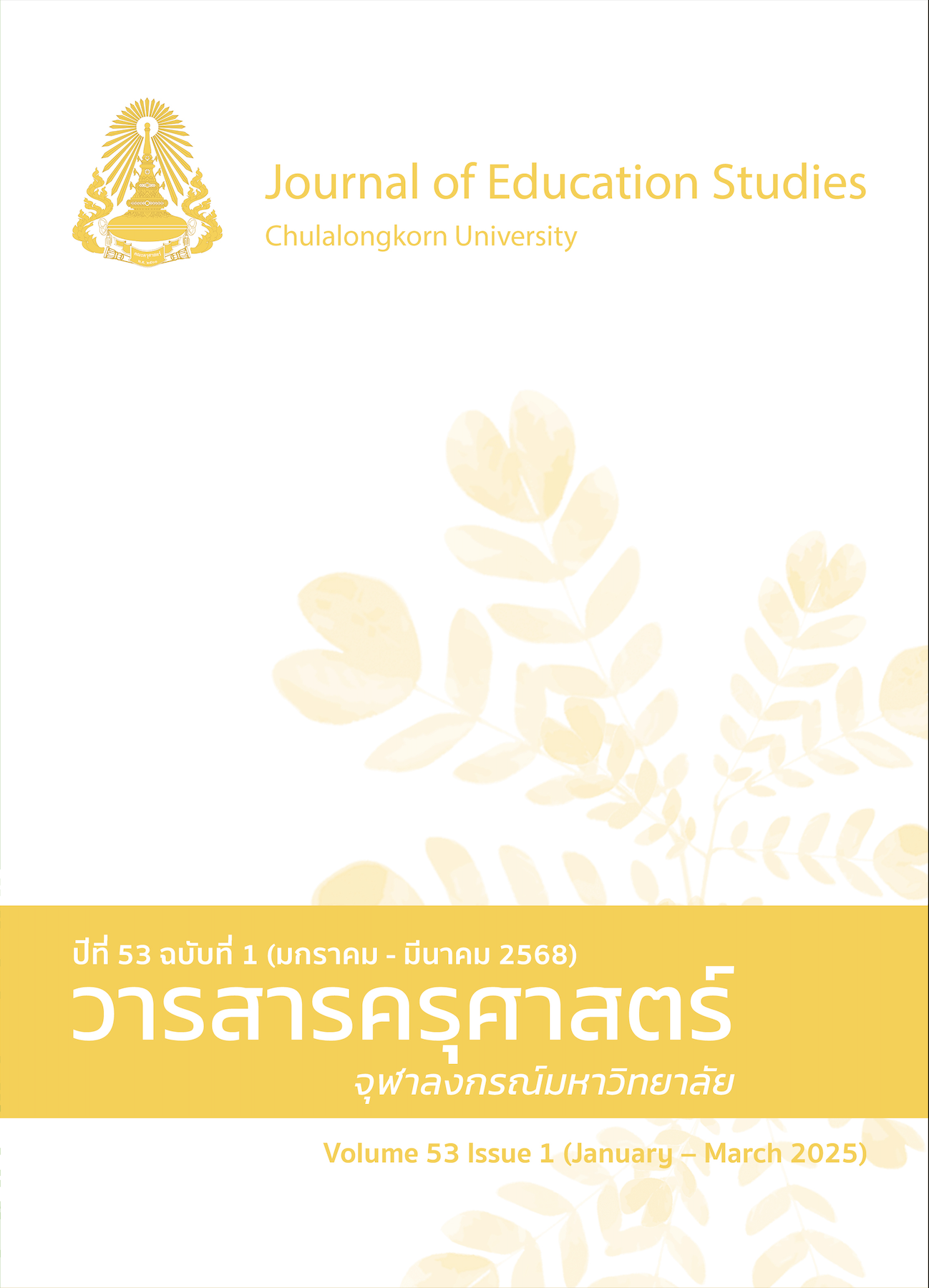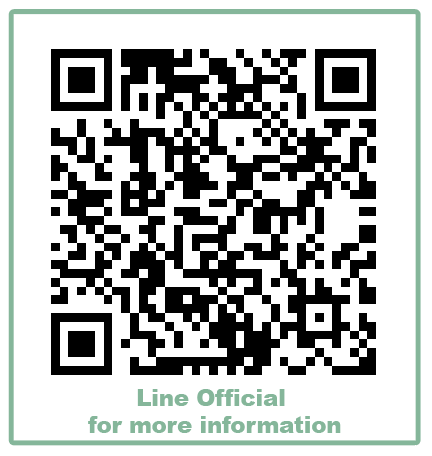กิจกรรมศิลปะในการเรียนรู้กายวิภาคศาสตร์สำหรับนักศึกษาแพทย์
คำสำคัญ:
ศิลปะและกายวิภาคศาสตร์, กิจกรรมศิลปะ, กายวิภาคศาสตร์, ภาพกายวิภาคศาสตร์บทคัดย่อ
การวิจัยนี้มีวัตถุประสงค์เพื่อ 1) วิเคราะห์และสังเคราะห์รูปแบบและผลของการใช้กิจกรรมศิลปะในการเรียนรู้กายวิภาคศาสตร์สำหรับนักศึกษาแพทย์ และ 2) พัฒนารูปแบบกิจกรรมศิลปะเพื่อสนับสนุนการเรียนรู้กายวิภาคศาสตร์ โดยใช้วิธีการทบทวนวรรณกรรมอย่างเป็นระบบ โดยศึกษาจากผลงานวิจัยที่มีบริบทครอบคลุมถึงกิจกรรมศิลปะในการเรียนรู้กายวิภาคศาสตร์ของนักศึกษาแพทย์ จากฐานข้อมูลในไทยและต่างประเทศ ที่เป็นบทความวิจัยที่ตีพิมพ์ในระยะเวลาย้อนหลังไม่เกิน 5 ปี ได้บทความตามเกณฑ์ที่กำหนดขึ้น 11 บทความ จากนั้นนำผลไปวิเคราะห์ ซึ่งผลการวิจัย พบว่า การวิจัยที่เกี่ยวข้องกับการนำกิจกรรมศิลปะมาใช้สนับสนุนการเรียนรู้กายวิภาคศาสตร์มีเป้าประสงค์เพื่อเพิ่มแรงจูงใจในการเรียน เป็นกิจกรรมที่ช่วยให้ผู้เรียนได้ทบทวนความรู้ให้เข้าใจเนื้อหาในเชิงลึกมากขึ้น พัฒนาทักษะการสังเกต ความคิดสร้างสรรค์ ทักษะการวาดภาพ รวมถึงการสื่อสารและการทำงานเป็นทีมระหว่างการทำกิจกรรม จากข้อค้นพบผู้วิจัยจึงได้พัฒนาแนวทางการจัดกิจกรรมศิลปะเพื่อการเรียนรู้กายวิภาคศาสตร์สำหรับนักศึกษาแพทย์ที่เรียกว่า KSC Model (K: Knowledge, S: Skills, C: Communication) ซึ่งเป็นรูปแบบกิจกรรมศิลปะที่ใช้ทบทวนความรู้ ฝึกทักษะการวาดภาพ และฝึกการนำเสนอต่อผู้อื่น ทำให้ผู้เรียนเกิดการเรียนรู้ด้านพุทธิพิสัย ทักษะพิสัย และจิตพิสัย เพื่อสร้างแรงจูงใจ จดจำได้ดี และมีความคงทนในการเรียน
References
ภาษาไทย
รวีโรจน์ ทองธานินท์ขวัญ, วทัญญู อินเทศน์, เอกณรงค์ ธรรมตา, เจษฎา บุญแก้ว, วิษณุ ใจวันดี, กาญจนา หาญศิริวัฒนกิจ, เพ็ญประภา ศิวิโรจน์, และ ไพวรรณ สุดวรรค์. (2561). ปัจจัยที่มีความสัมพันธ์กับความรู้ความจำเรื่องมหกายวิภาคศาสตร์ของมนุษย์ในนักศึกษาแพทย์. จุฬาลงกรณ์เวชสาร, 62(3), 593-605. https://doi.org/10.58837/CHULA.CMJ.62.3.14
วรสิทธิ์ เจริญศิลป์, ชัยกิจ อุดแน่น, ศุภชัย นาทองไชย, ธนวรรณ แก้วคง, นาฏยา แก้วมา, และ จินดาหรา บุญมี. (2562). สถานภาพความรู้ด้านแพทยศาสตรศึกษาในประเทศไทย: การศึกษาโดยใช้งานวิจัยเป็นฐาน. ศรีนครินทร์เวชสาร, 34(1), 68-74. https://li01.tci-thaijo.org/index.php/SRIMEDJ/article/view/173314
สรณรัชฎ์ กาญจนะวณิชย์, สุทัศน์ ยกส้าน และ บัญชา ธนบุญสมบัติ. (2550). ถอดรหัสอัจฉริยะ เลโอนาโด ดาวินชี. สารคดี.
สิรินิตย์ พรรณหาญ, บุญมี พันธุ์ไทย, และ กมลทิพย์ ศรีหาเศษ. (2561). ปัจจัยที่มีผลต่อความเครียดในการเรียนของนักศึกษาแพทย์ชั้นปีที่ 4-6 คณะแพทยศาสตร์โรงพยาบาลรามาธิบดี มหาวิทยาลัยมหิดล. Veridian E-Journal, Silpakorn University, 11(3), 2579-2593. https://he02.tci-thaijo.org/index.php/Veridian-E-Journal/article/view/161269
อัจฉรา คำมะทิตย์ และ มัลลิกา มากรัตน์. (2559). การทบทวนวรรณกรรมอย่างเป็นระบบ: วิธีปฏิบัติทีละขั้นตอน. วารสารเครือข่ายวิทยาลัยพยาบาลและการสาธารณสุขภาคใต้, 3(3), 246-259. https://he01.tci-thaijo.org/index.php/scnet/article/view/68742
อภินภัศ จิตรกร. (2559). การจัดการเรียนรู้แบบศิลปะเป็นฐานเพื่อส่งเริมความคิดสร้างสรรค์ของผู้เรียนในศตวรรษที่ 21. วารสารศึกษาศาสตร์ มหาวิทยาลัยศิลปากร, 14(1), 60-72. https://so02.tci-thaijo.org/index.php/suedujournal/article/view/92249
ภาษาอังกฤษ
Amin, A. (2020). ‘Drawing’ to learn anatomy: Exploring the theoretical underpinning and conditions favouring drawing based learning. The Journal of the Pakistan Medical Association, 70(11), 2017-2022. https://pubmed.ncbi.nlm.nih.gov/33341850/
Carrasco-Molinillo, C., Ribelles-Garcia, A., Almorza-Gomar, D., Pérez-Arana, G. & Prada-Oliveira, J. A. (2019). The teaching of surface anatomy by body painting. International Journal of Morphology, 37(3), 912-916. http://doi.org/10.4067/S0717-95022019000300912
Diaz, C. M. (2022). Beyond the classroom: Inspiring medical and health science students to learn surface anatomy. Medical Science Educator, 32, 361-370. https://doi.org/10.1007/s40670-022-01521-0
Diaz, C. M., & Woolley, T. (2021). “Learning by doing”: A mixed-methods study to identify why body painting can be a powerful approach for teaching surface anatomy to health science students. Medical Science Educator, 31, 1875-1887. https://doi.org/10.1007/s40670-021-01376-x
Fleming, N. D. & Mills, C. (1992). Not another inventory, rather a catalyst for reflection. To Improve the Academy, 11(1), 137-144. https://doi.org/10.1002/j.2334-4822.1992.tb00213.x
Gilbert, M., Picketts, L., MacLeod, A., & Steward, W. A. (2022). How an arts-based clinical skills set can be assessed during OSCEs. AMA Journal of Ethics, 22(7), 556-562. https://doi.org/10.1001/amajethics.2022.556
Greene, S. J. (2019). The use and effectiveness of interactive progressive drawing in anatomy education. Anatomy Science Education, 11(5), 445-460. https://doi.org/10.1002/ase.1784
Hajar, R. (2011). Medical illustration: Art in medical education. Heart Views, 12(2), 83-91. https://doi.org/10.4103/1995-705X.86023
He, B., Prasad, S., Higashi, R. T., & Goff, H. W. (2019). The art of observation: A qualitative analysis of medical students’ experiences. BMC Medical Education, 19(234), 1-6. https://doi.org/10.1186/s12909-019-1671-2
Hernandez, J. E., Vasan, N., Huff, S., & Melovitz-Vasan, C. (2020). Learning styles/preferences among medical students: Kinesthetic learner’s multimodal approach to learning anatomy. Medical Science Educator, 30, 1633-1638. https://doi.org/10.1007/s40670-020-01049-1
Hodges, E. R. S., Buchanan, S., & Nicholson, T. (2003). The Guild Handbook of Scientific Illustration (2nd ed.). Van Nostrand Reinhold.
Iorio, S., Cilione, M., Martini, M., Tofani, M., & Gazzaniga, V. (2022). Soft skills are hard skills— a historical perspective. Medicina, 58(8), 1044. https://doi.org/10.3390/medicina58081044
Masters, K. (2013). Edgar Dale’s pyramid of learning in medical education: A literature review. Medical Teacher, 35(11), e1584-e1593. https://doi.org/10.3109/0142159X.2013.800636
Mitrousias, V., Baxevanidou, K., & Zibis, A. (2020). Art & anatomy: An everlasting relationship creating new insights in teaching surface anatomy. MedEdPublish, 9(23), 1-19. https://doi.org/10.15694/mep.2020.000023.1
Reid, S., Shapiro, L., & Louw, G. (2019). How haptics and drawing enhance the learning of anatomy. Anatomical Sciences Education, 12(2), 164-172. https://doi.org/10.1002/ase.1807
Shapiro, L., Hobbs, E., & Keenan, I. D. (2023). Transforming musculoskeletal anatomy learning with haptic surface painting. Anatomical Sciences Education, 16(4), 677-693. https://doi.org/10.1002/ase.2262
Singal, A., Sahni, D., Chaudhary, P., & Singh, H. (2021). Virtual thanks giving to a cadaver by medical students exposed to learning anatomy before and amidst covid-19 pandemic. Surgical and Radiologic Anatomy, 43, 523–527. https://doi.org/10.1007/s00276-021-02715-8
Sontakke, Y. A., & Akhil, J. (2022). Changing art of anatomy illustrations. Scholars International Journal of Anatomy and Physiology, 5(3), 55-58. https://doi.org/10.36348/sijap.2022.v05i03.001
Zumwalt, A. C. (2020). Anticipatory feelings about dissection: An exercise for the first day of a gross anatomy course. Anatomical Sciences Education, 14(6), 828-835. https://doi.org/10.1002/ase.2048
Downloads
เผยแพร่แล้ว
How to Cite
ฉบับ
บท
License

This work is licensed under a Creative Commons Attribution-NonCommercial-NoDerivatives 4.0 International License.



